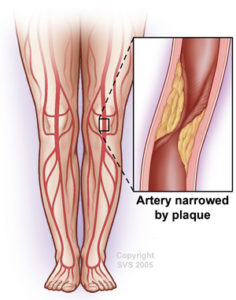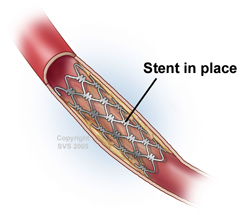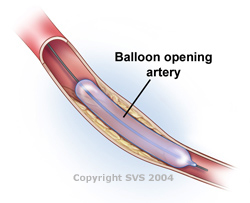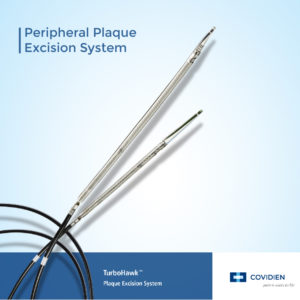What is Peripheral Arterial Disease?
 Peripheral arterial disease, also known as PAD, is a chronic disease in which plaque builds up in the arteries of the legs. This build up is gradual, occurring over our lifetime. If allowed to progress, the blood flow in the artery affected can be limited or blocked all together.
Peripheral arterial disease, also known as PAD, is a chronic disease in which plaque builds up in the arteries of the legs. This build up is gradual, occurring over our lifetime. If allowed to progress, the blood flow in the artery affected can be limited or blocked all together.
PAD is relatively common, affecting more than 10 million people in the US. It is more common in people over the age of 65, but can occur at nearly any age. Risk factor for PAD include smoking, diabetes, high blood pressure, high cholesterol and family history.
What are the symptoms of PAD?
Many patients initially experience no symptoms. However, as the disease progresses, symptoms such as leg fatigue or cramping while walking or pain in the toes or feet while resting may occur. If the disease worsens, you may notice wounds on the feet or toes. This is a sign of severe disease and requires immediate medical attention.
How is PAD diagnosed?
 During your appointment with us, you will be asked questions about your symptoms and medical history. We will also perform a physical exam.
During your appointment with us, you will be asked questions about your symptoms and medical history. We will also perform a physical exam.
If indicated, an ultrasound of the arteries in your legs will be performed to evaluate your blood flow. If this test determines you have blockage in your arteries that is limiting the flow to your leg, treatment options will be discussed with you.
How is PAD treated?
PAD is usually treated by aggressively managing the risk factors with lifestyle changes and medication. This may include quitting smoking, controlling your blood pressure and cholesterol, controlling diabetes, and losing weight. Exercise can also help improve the symptoms of PAD.
In the case of severe symptoms and blockage, further treatments such as minimally invasive balloon angioplasty and stent placement may be necessary to improve the blood flow.




